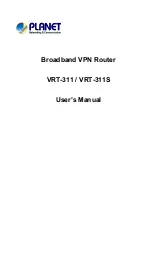
3-14
MAX 3000 Installation and Basic Configuration Guide
MAX User Interfaces
Using command-line-interface (CLI) tools
Terminal-server functions
The following subsections summarize the functions of the terminal server.
For a list of terminal-server commands and basic syntax, enter
help
at the terminal-server
prompt.
Managing MAX units
The commands summarized in Table 3-7 on page 3-14 provide tools for managing MAX units.
Table 3-7. Managing MAX units from the terminal server
Terminal-server
command
Function
test
Tests two open channels by having the unit place a call to itself on
one channel and receive it on the other channel.
remote
Starts a remote management session with a MAX unit over an MP+
connection. The remote device’s VT100 interface replaces that of
the local MAX unit.
set
When used with arguments, provides a set of commands for display-
ing current settings, setting terminal type for Telnet and Rlogin con-
nections, enabling dynamic password service for ACE or SafeWord
servers, and managing Frame Relay connections. To display argu-
ments and syntax, enter
set ?
.
show
When used with arguments, provides a set of commands for display-
ing status information about MAX functions, including ARP, ICMP,
IP, UDP, IGMP, MROUTING, OSPF, TCP, DNS, IPX, ISDN, Frame
Relay, address pools, modems, calls, X.25/PAD, system uptime,
V.110 calls, active users, and DNIS. To display arguments and syn-
tax, type
show ?
.
dnstab
When used with arguments, a collection of commands for editing
and displaying the MAX unit’s Domain Name System (DNS) table.
To display arguments and syntax, enter
dnstab ?
.
kill
Disconnects a user’s Telnet connection.
















































